Windows Installation Guide#
This guide describes how to download, install and encrypt the Dash Core wallet for Windows. The guide is written for Windows 10, but the steps should be similar for Windows XP, Vista, 7 and 8.
Downloading the Dash Core wallet#
Visit https://www.dash.org/downloads/ to download the latest Dash Core wallet. In most cases, the website will properly detect which version you need. Click Download Installer to download the installer directly.
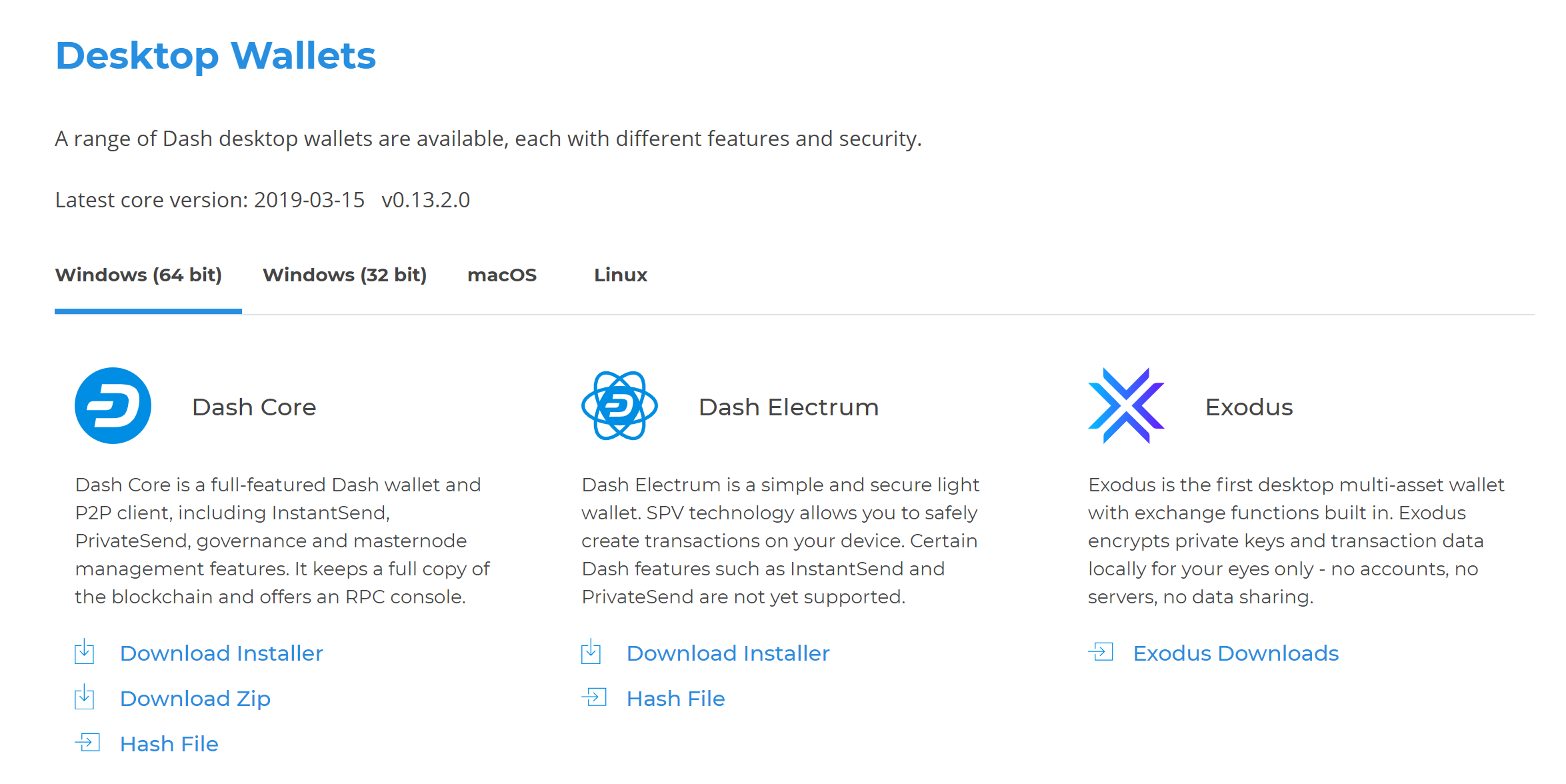
The website properly detects the wallet appropriate for your system#
If detection does not work, you will need to manually choose your operating system and whether you need a 32 or 64 bit version. If you are unsure whether your version of Windows is 32 or 64 bit, you can check in Windows 10 under Start > Settings > System > About. For details on how to check this in other versions of Windows, see here.
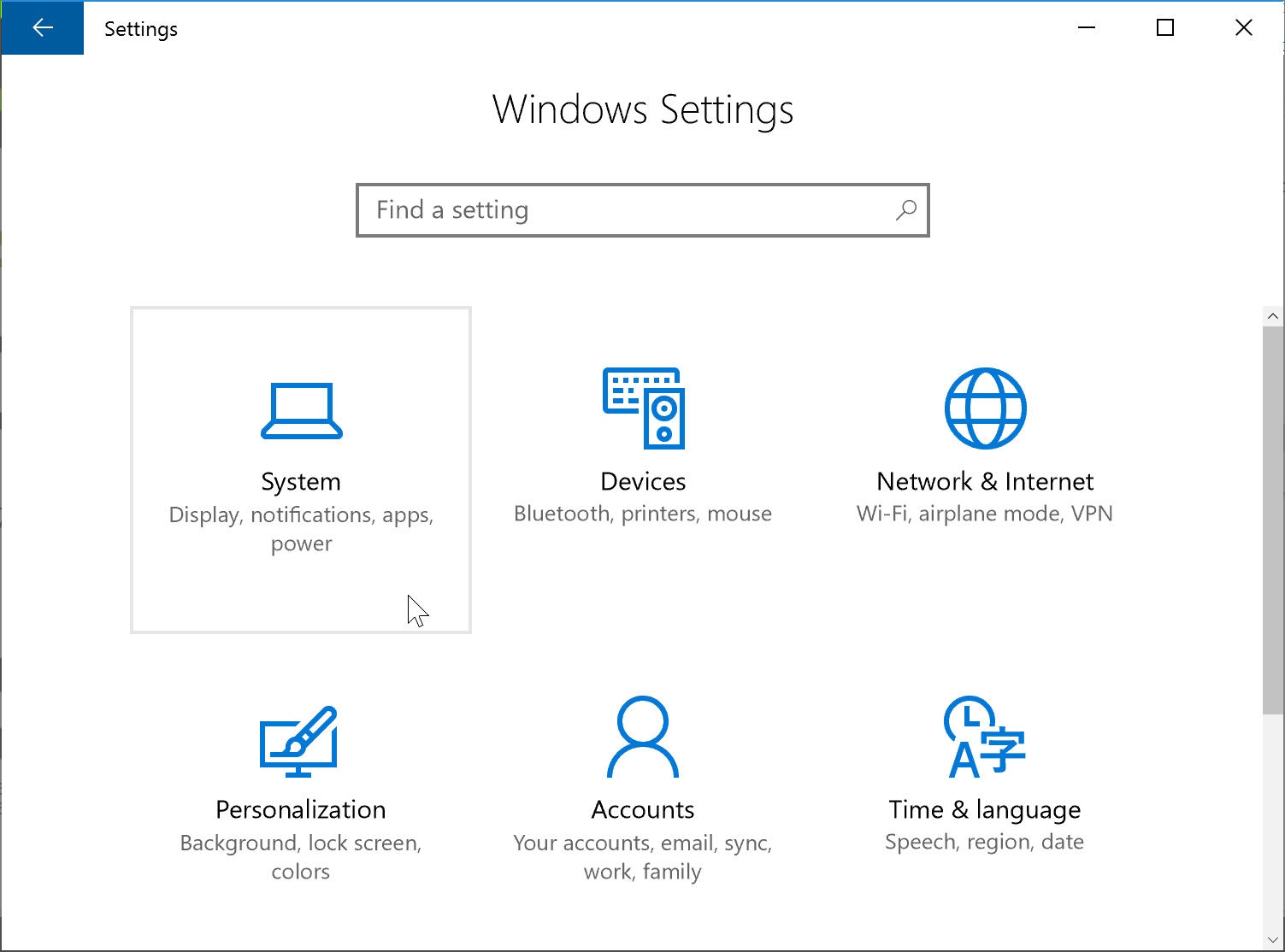
In Windows Settings, click System#

Under the System section, click About to view the System type. This is a 64 bit system.#
Once you know which version you need, download the Dash Core Installer to your computer from https://www.dash.org/downloads/ and save the file you downloaded to your Downloads folder.
Verifying Dash Core#
This step is optional, but recommended to verify the authenticity of the file you downloaded. This is done by checking its detached signature against the public key published by the Dash Core development team. To download the detached signature, click the Installer Signature button on the wallet download page and save it to the same folder as the downloaded binary.
All releases of Dash are signed using GPG with one of the following keys:
Alexander Block (codablock) with the key
63A9 6B40 6102 E091, verifiable here on Keybase (download)Pasta (pasta) with the key
5252 7BED ABE8 7984, verifiable here on Keybase (download)
Download the key files above. Install Gpg4win if it is not already available on your computer. Once it is installed, open the Kleopatra certificate manager and click File -> Import. Import the key files and verify the Key-ID matches the ID above.

Importing codablock's GPG public key#
Skip any requests to certify the certificate with your own key. Next,
click Decrypt/Verify... and select the detached signature file named
dashcore-18.2.1-win64-setup.exe.asc in the same folder as the
downloaded installer.
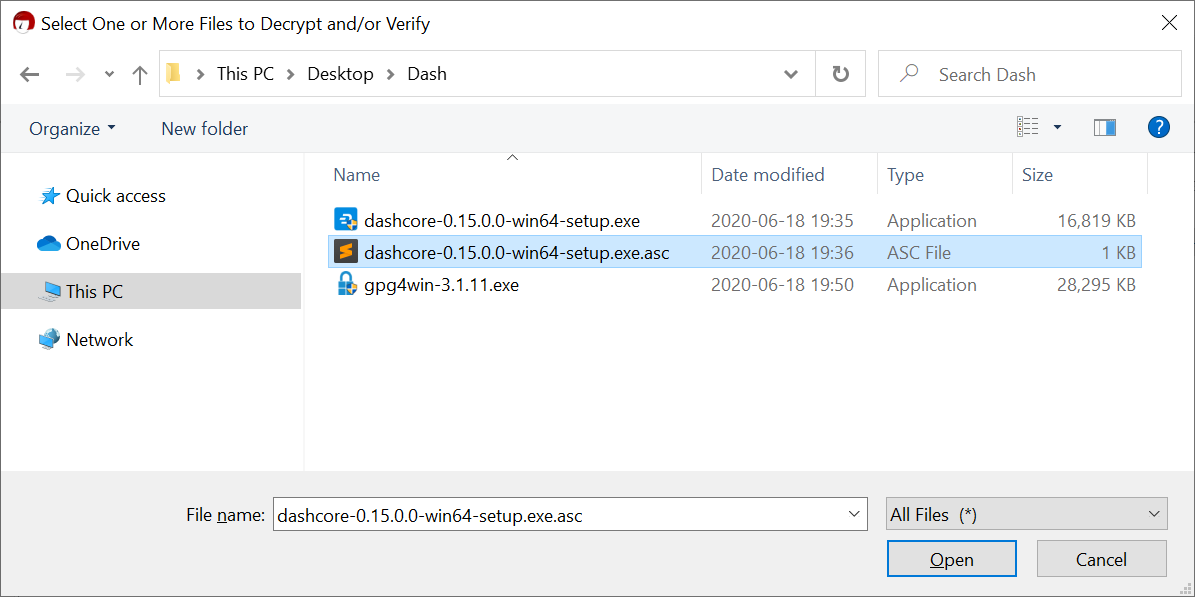
Selecting the signature file for verification#
If you see the first line of the message reads Verified
dashcore-18.2.1-win64-setup.exe with
dashcore-18.2.1-win64-setup.exe.asc then you have an authentic copy
of Dash Core for Windows.
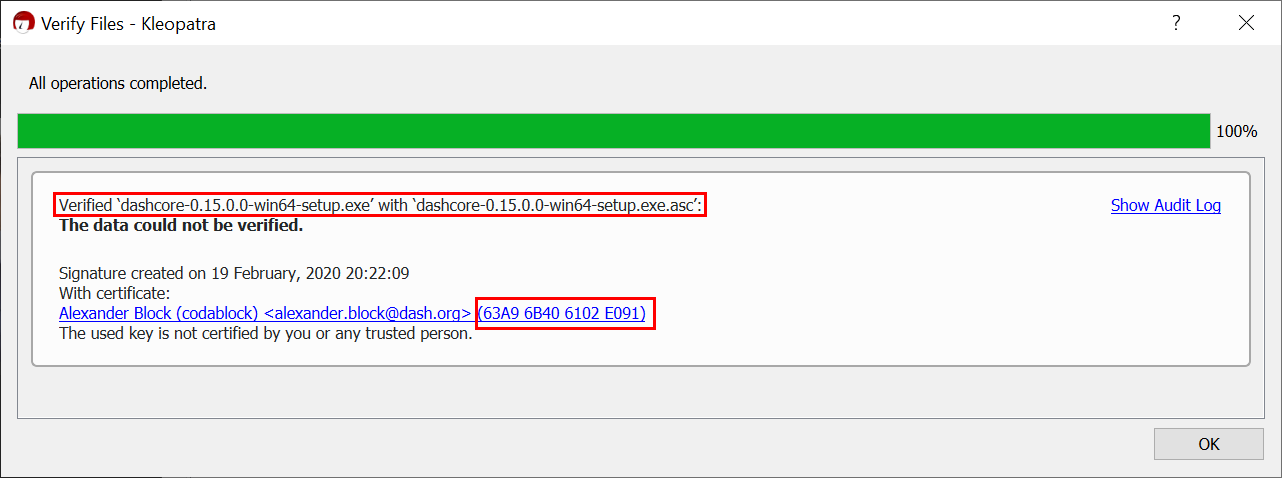
The binary installer has been verified#
Running the Dash Core installer#
Double-click the file to start installing Dash Core.

The Dash Core installer in the Downloads folder#
At this point, you may see a warning from Windows SmartScreen that the app is unrecognized. You can safely skip past this warning by clicking More info, then Run anyway.
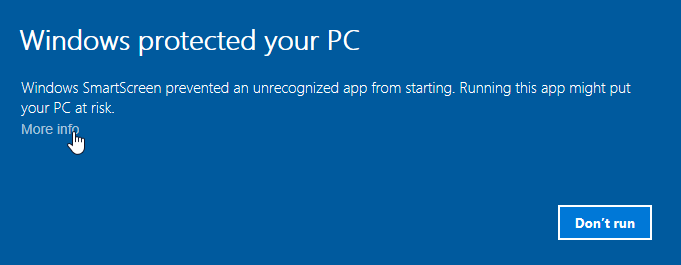
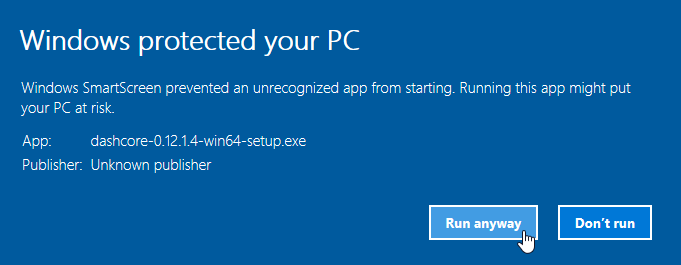
Bypassing Windows SmartScreen to run the app. This warning is known as a “false positive”.#
The installer will then guide you through the installation process.
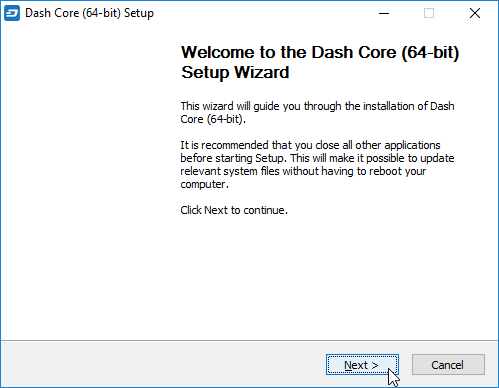
The Dash Core installer welcome screen#
Click through the following screens. All settings can be left at their default values unless you have a specific reason to change something.
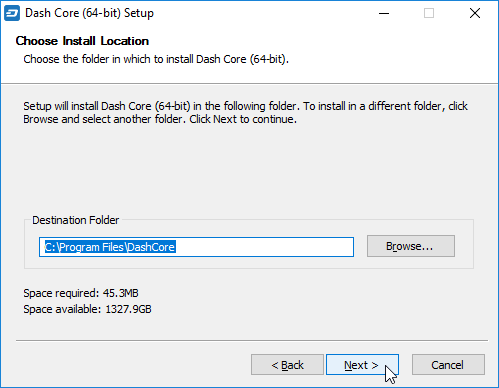
Select the installation location#
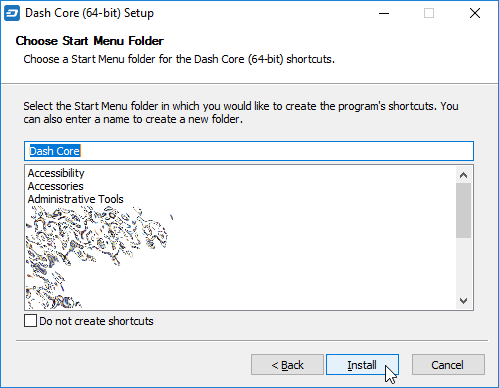
Select the Start menu folder#
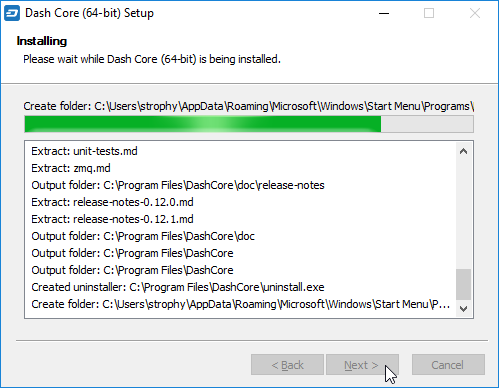
Dash Core is being installed#
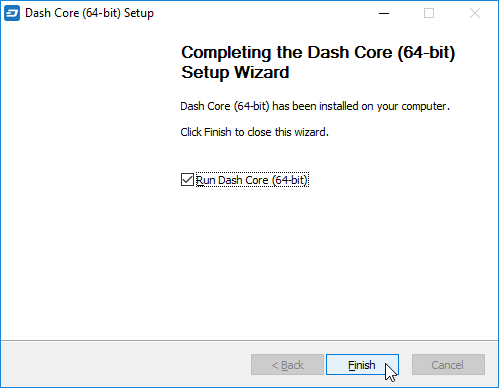
Installation is complete#
Running Dash Core for the first time#
Once installation is complete, Dash Core will start up immediately. If it does not, click Start > Dash Core > Dash Core to start the application. The first time the program is launched, you will be offered a choice of where you want to store your blockchain and wallet data. Choose a location with enough free space, as the blockchain can reach 30GB+ in size. It is recommended to use the default data folder if possible.
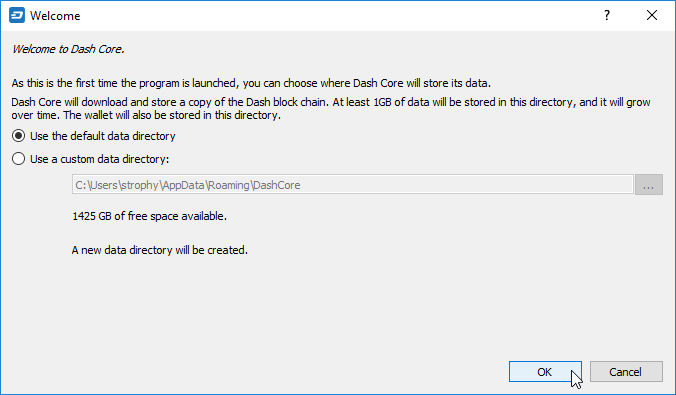
Choosing the Dash Core data folder#
Dash Core will then start up. This will take a little longer than usual the first time you run it, since Dash Core needs to generate cryptographic data to secure your wallet.
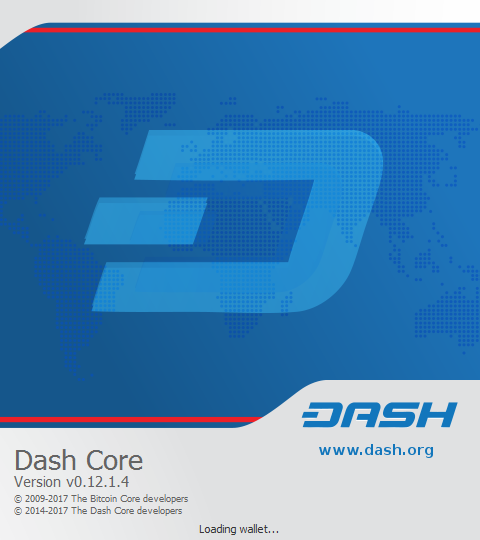
Starting Dash Core#
Synchronizing Dash Core to the Dash network#
Once Dash Core is successfully installed and started, you will see the wallet overview screen. You will notice that the wallet is “out of sync”, and the status bar at the bottom of the window will show the synchronization progress.
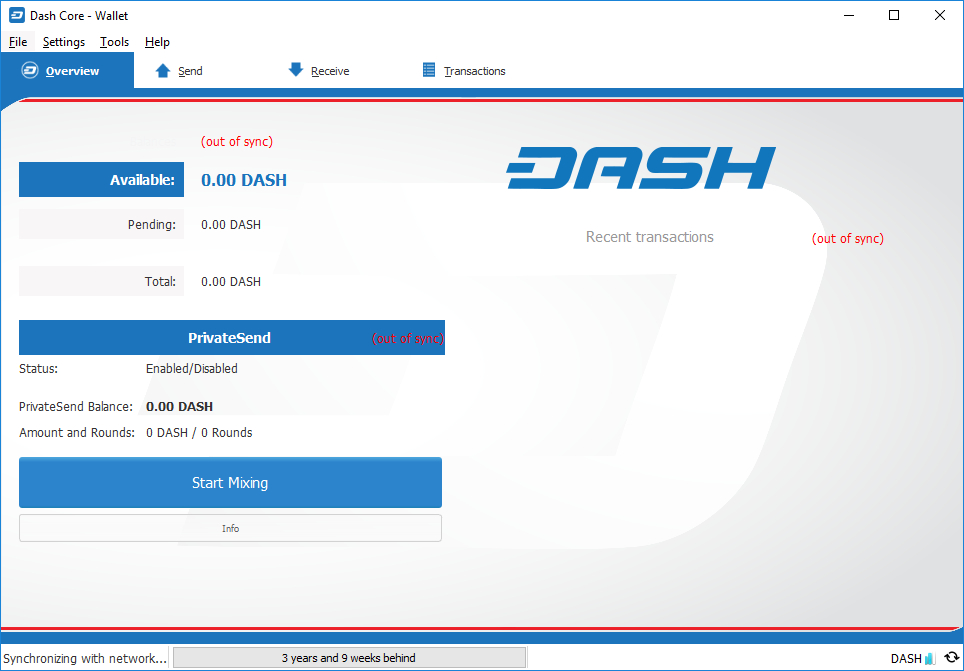
Dash Core begins synchronizing with the Dash network#
During this process, Dash Core will download a full copy of the Dash blockchain from other nodes to your device. Depending on your internet connection, this may take a long time. If you see the message “No block source available”, check your internet connection. When synchronization is complete, you will see a small blue tick in the lower right corner.

Dash Core synchronization is complete#
You can now begin to use your wallet to send and receive funds.
Encrypting your Dash wallet#
After your wallet has synchronized with the Dash network, it is strongly advised to encrypt the wallet with a password or passphrase to prevent unauthorized access. You should use a strong, new password that you have never used somewhere else. Take note of your password and store it somewhere safe or you will be locked out of your wallet and lose access to your funds.
To encrypt your wallet, click Settings > Encrypt Wallet.
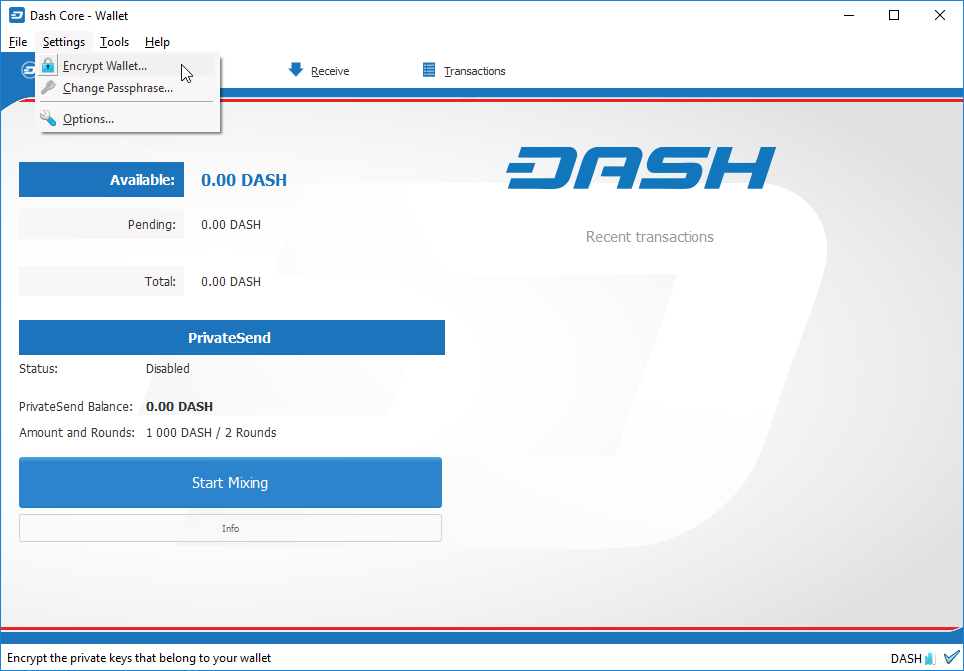
Encrypting the Dash wallet with a password#
You will be asked to enter and verify a password.
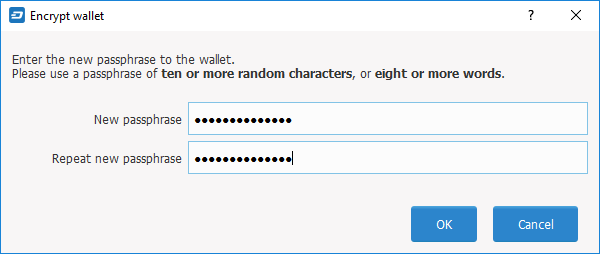
Enter a password#

Confirm you want to encrypt your wallet#
When the encryption process is complete, you will see a warning that past backups of your wallet will no longer be usable, and be asked to shut down Dash Core. When you restart Dash Core, you will see a small blue lock in the lower right corner.
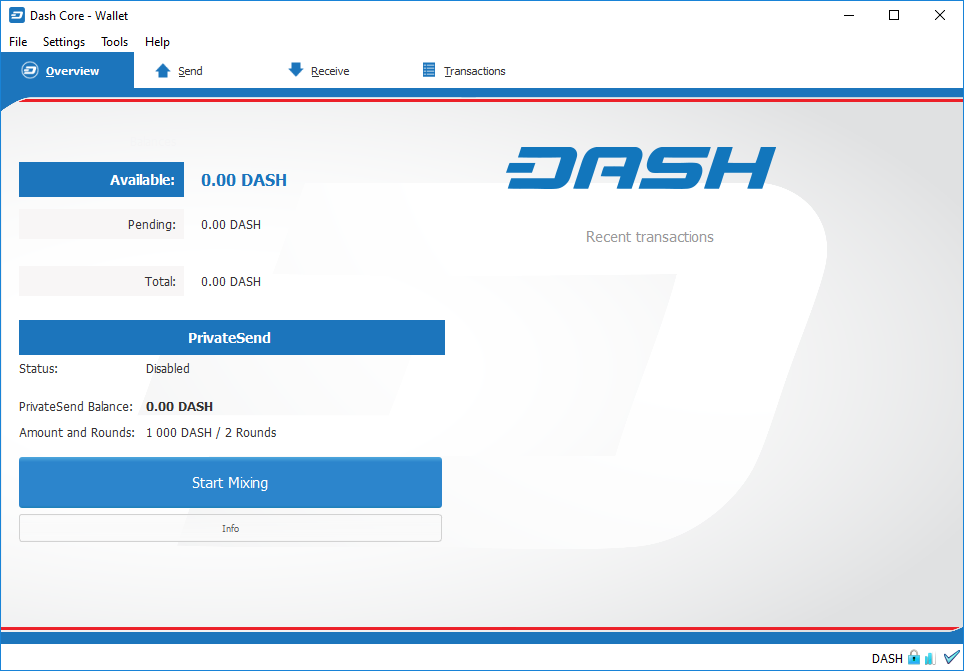
Fully encrypted and synchronized Dash Core wallet#
You can now begin to use your wallet to safely send and receive funds.